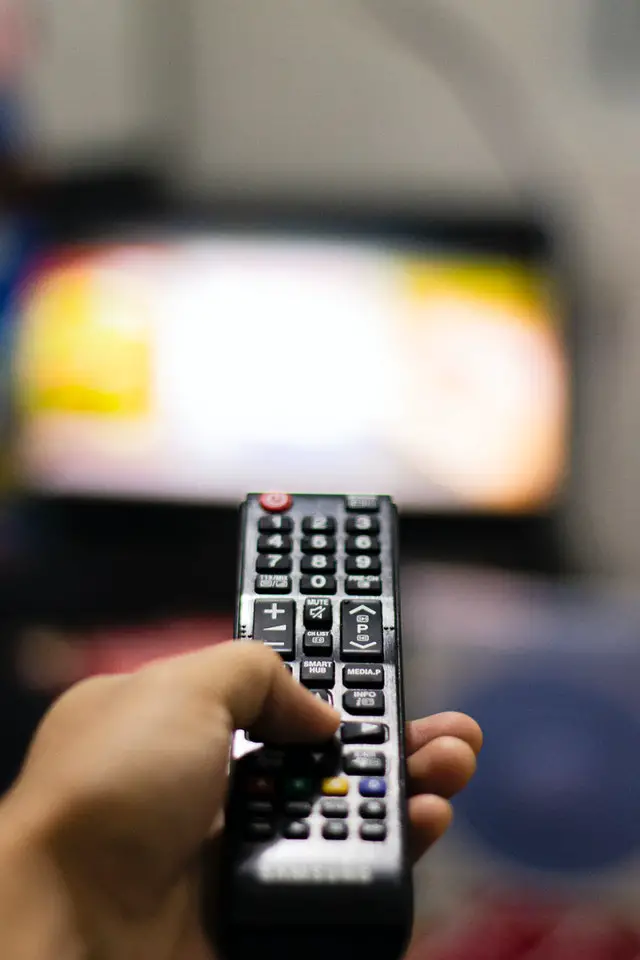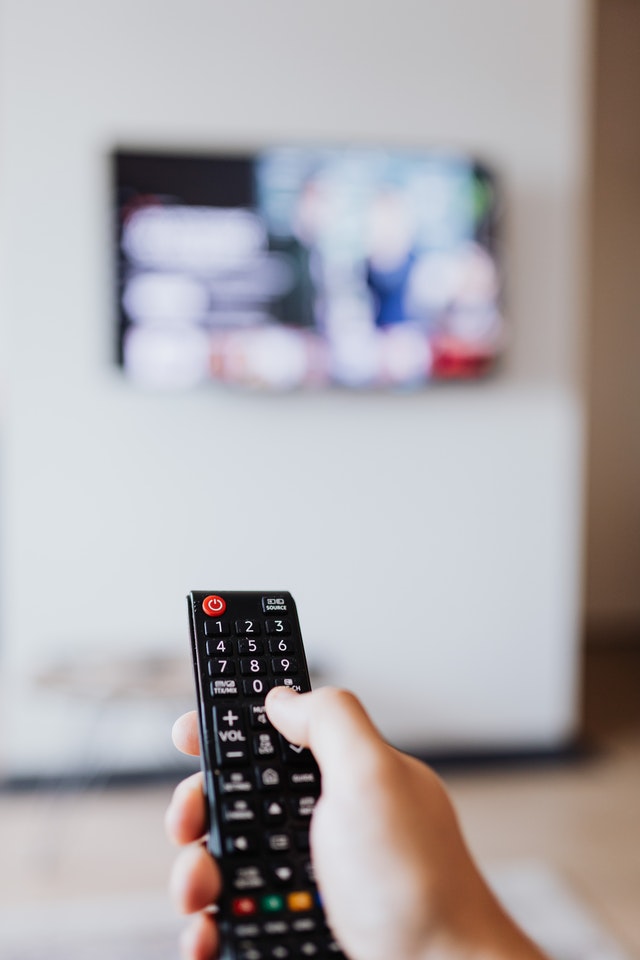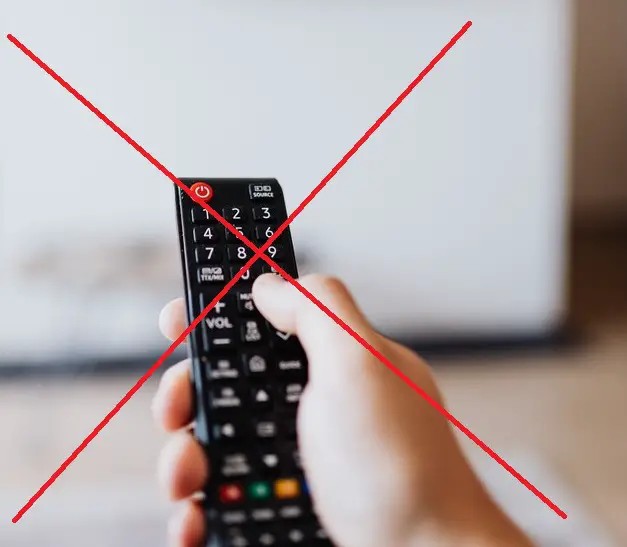This morning when I was using Netflix on my Samsung TV, I noticed that my TV remote was not responding to anything, but I changed its batteries too, but there was no improvement in the situation. Then I followed some methods by which my TV remote works again, and today in this article I will mention the same ways by which if you are also facing the problem of Samsung TV remote blinking red light and not working, then you can quickly solve it.

Why is Samsung TV remote blinking red light and not working?
There are a few possible reasons why your Samsung TV remote may be flashing a red light and not working properly:
- Battery Issues: – The remote may not be working due to low or dead batteries.
- Long Distance: – The remote may not be working properly if it’s too far away from the TV.
- Interference with any obstacles: – Other electronic devices can sometimes interfere with the remote’s signal, causing it to not work properly. Any obstacle can also interfere with your remote signal and deflects it.
- Dirty sensors: – Dirt and debris on the remote’s sensors or the TV’s sensor can cause the remote to not work properly.
- Hardware problem on remote: – Maybe the inside circuit that might be faulty and causing this problem.
- Button stuck: – Stuck buttons on a TV remote can cause a variety of issues and make it difficult to use the remote properly.
How to fix Samsung TV remote blinking red light and not working?
Change your remote batteries: –
As you know the battery is one of the essential components of a TV remote. Batteries are used in TV remotes as a power source to operate the remote control. The batteries provide the power necessary to send a signal from the remote to the TV, allowing the user to control the TV without having to be physically connected to it.
The batteries in a TV remote typically provide power to the buttons, LED lights, and the infrared (IR) or radio frequency (RF) transmitter that sends the signal to the TV. Without batteries, the remote would not be able to function, and the user would not be able to control the TV from a distance.

If somehow your batteries might get weak and dead, this can cause your remote not to work.
There are several reasons why weak or low batteries may not work in a TV remote: –
Voltage: Batteries lose voltage as they get used, and once the voltage drops below a certain level, the remote may not work properly. New, fresh batteries will typically have a higher voltage and work better in the remote.
Battery life: Some batteries have a shorter lifespan than others, and may not last as long before needing to be replaced. Consider using high-quality batteries that have a longer lifespan.
Remote use: Frequently using the remote can drain batteries faster. Try reducing the amount of time the remote is used or replacing the batteries more often to prevent weak batteries from causing the remote to stop working.
If you are experiencing issues with weak batteries not working in your TV remote, consider trying a different brand or type of battery.
Restart your TV: –
Restarting the TV can sometimes help fix issues with the TV remote not working. Here’s how to do it:
Unplug the TV: Disconnect the power cable from the TV and unplug it from the wall outlet or you can press the standby button on your Samsung TV.
Wait a few minutes: Wait for a few minutes to allow the TV to completely shut down.
Plug the TV back in: Plug the TV back into the wall outlet and reconnect the power cable.
Turn on the TV: Turn on the TV and test the remote to see if it is now working properly.
In some cases, restarting the TV can help reset any software or connectivity issues that may be affecting the remote. If the remote still isn’t working after restarting the TV, you may need to try other troubleshooting steps, such as replacing the batteries or cleaning the buttons.
Clear obstacles between your TV remote and TV: –
Here are some ways to tackle obstacles that may deflect or interfere with the signals from a TV remote:
Line of sight: Ensure that there is a clear line of sight between the remote and the TV, without any physical obstructions between them. Remove any objects that may be blocking the signal, such as furniture, curtains, or walls.
Interference with other signals: Other electronic devices, such as microwaves or Wi-Fi routers, can sometimes interfere with the remote’s signal. Try moving the remote and other devices away from each other to see if this resolves the issue.
Remote placement: The remote may not work properly if it is placed on or near a metallic surface. Try moving the remote away from metal surfaces to see if this resolves the issue.
Remote orientation: The remote may not work properly if it is not pointed directly at the TV’s sensor. Ensure that the remote is pointed directly at the TV’s sensor and that the signal path is clear.
Check your distance from Samsung TV: –
The maximum distance that a TV remote can operate depends on several factors, such as the type of remote (infrared (IR) or radio frequency (RF)), the power of the signal, and the presence of obstructions or interference.
In general, IR remotes are limited to a line-of-sight range of approximately 15-20 feet (5-7 meters). Beyond that distance, the signal may become too weak to be received by the TV.
RF remotes typically have a longer range than IR remotes and can operate from a distance of up to 50-100 feet (15-30 meters) or more, depending on the remote and the signal strength. However, RF signals can be affected by obstructions, such as walls and furniture, and by interference from other electronic devices, such as Wi-Fi routers or microwaves.

It is important to note that the actual range of a TV remote may vary depending on the specific remote and the environment in which it is being used. To ensure optimal performance, it is recommended to keep the remote within a reasonable distance from the TV and to minimize any obstructions or interference.
Clear your sensors: –
Dirt or debris on the TV’s sensor can cause a TV remote to stop working or to work intermittently. This is because the sensor is responsible for receiving the signal from the remote and translating it into action on the TV. If the sensor is dirty, it may not be able to properly detect the signal from the remote, resulting in the TV not responding to the remote’s commands.
Use a soft, dry cloth to gently clean the sensor. Avoid using liquids or chemical cleaners, as these can damage the sensor.
Check internal circuit damage: –
Internal hardware damage can cause a TV remote to stop working. This damage can occur due to various reasons, such as exposure to moisture, physical damage, or the natural wear and tear that occurs over time.
Here are some common internal hardware issues that can cause a TV remote to stop working:
Circuit damage: The circuits inside the remote can become damaged due to exposure to moisture or physical impact. This can cause the remote to stop working or to work intermittently.
Battery corrosion: If the batteries are left inside the remote for an extended period of time, they can leak and cause corrosion inside the remote. This can cause damage to the circuits and other internal components.
Worn buttons: Over time, the buttons on the remote can become worn and may not function properly. This can cause the remote to stop working or to only work intermittently.
Fixing internal circuit damage in a TV remote can be difficult and may require technical expertise. Here are some options to consider:
Professional repair: Consider taking the remote to a repair professional who specializes in fixing TV remotes. They will be able to diagnose the issue and determine if it is possible to repair the remote.
Replace the remote: If the damage to the remote is extensive, it may be more cost-effective to replace the remote instead of repairing it. Contact the manufacturer or a reputable retailer to purchase a new remote.
Do-it-yourself repair: If you have experience with electronics and are confident in your abilities, you can attempt to repair the remote yourself. However, be aware that this can be a difficult and time-consuming process, and it may not be possible to repair the remote if the damage is extensive. Additionally, attempting to repair the remote yourself can also void any warranties or guarantees.
It is important to note that internal hardware damage can also be a sign of a deeper issue with the TV itself. Before attempting to repair the remote, consider contacting the manufacturer or a repair professional to diagnose and address any underlying issues with the TV.
Stuck buttons on a TV remote can cause a variety of issues and make it difficult to use the remote properly. This can happen when debris, dust, or dirt accumulates inside the remote and prevents the buttons from moving freely. Stuck buttons can also occur due to wear and tear over time.
Here are some problems that can result from stuck buttons on a TV remote:
Inability to change channels or adjust the volume: If the buttons on the remote are stuck, you may not be able to change channels or adjust the volume, making it difficult to watch TV.
Intermittent operation: Stuck buttons can cause the remote to work intermittently, making it difficult to control the TV.
Unintended actions: If buttons are stuck in the pressed position, the TV may perform unintended actions, such as changing channels or turning off unexpectedly.
Here are some steps to fix a stuck button on a TV remote:
Remove the batteries: Remove the batteries from the remote to prevent it from turning on or sending signals.
Clean the buttons: Use a soft, dry cloth to gently clean the buttons. You can also use a can of compressed air to blow dust and debris out of the remote.
Check for physical obstruction: Carefully inspect the buttons for any physical obstructions, such as debris or dirt, and remove any that you find.
Apply pressure: If the button is still stuck, try applying gentle pressure to the button while pushing it in and out.
If the button is still stuck after following these steps, the issue may be with the internal mechanism of the remote. Consider contacting the manufacturer or a repair professional for further assistance. In some cases, the remote may need to be replaced, while in others, it may be possible to repair the remote.
